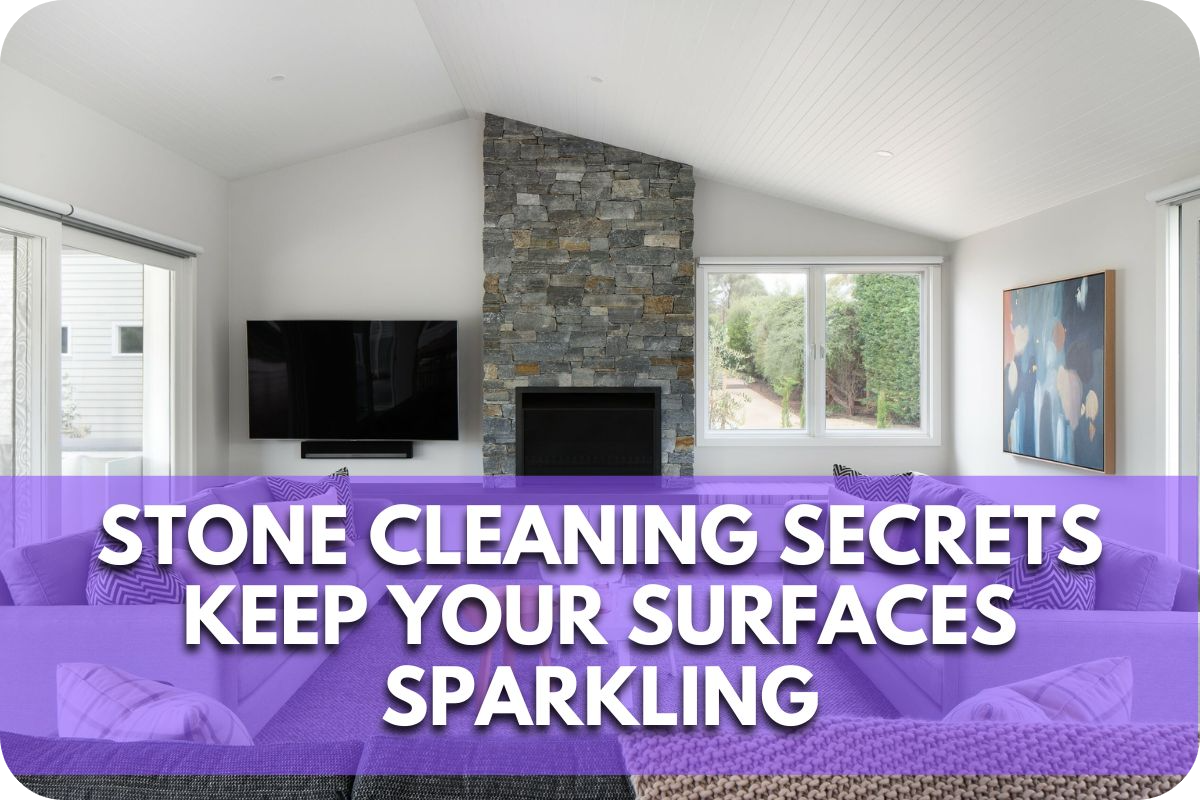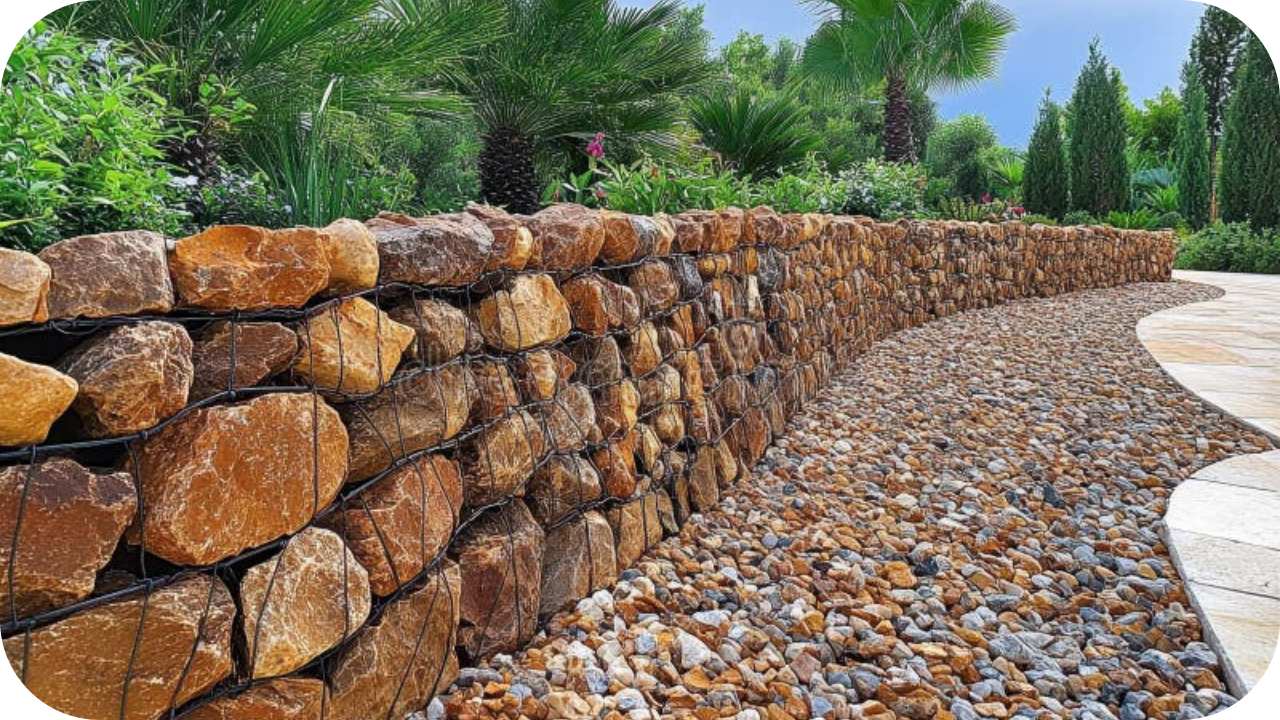
Grimy floors, and mysterious stains – keeping your stone surfaces looking their best can feel like an endless battle.
Harsh cleaners can do more harm than good, and ineffective methods waste your time and energy. You want those beautiful surfaces to shine, not stress you out!
Discover the secrets to effective stone cleaning.
Learn the right techniques and products to restore your stone’s natural beauty and keep it sparkling for years.
Understanding Your Stone
Before scrubbing, you must know what kind of stone you’re dealing with. Here’s a quick look at common types:
- Granite: Tough and generally stain-resistant.
- Marble: Elegant, luxurious, softer, and prone to etching and staining.
- Limestone: Offers a warmer, earthy look but can be porous and needs proper sealing.
- Quartzite: Similar to granite in durability, often with stunning marble-like veining.
- Soapstone: Non-porous and naturally darkens over time, gaining a unique patina.
Why It Matters?
Different stones have unique compositions and react differently to cleaning products. Using the wrong cleaner can permanently damage your surfaces. Knowing your specific stone type is the first step to selecting the safest and most effective cleaning methods.
Essential Tools and Supplies
Here’s your stone cleaning toolkit:
- Soft Cloths: Microfiber cloths are ideal as they won’t scratch delicate surfaces.
- Sponges: Choose non-abrasive sponges for scrubbing.
- Spray Bottle: This is for convenient application as a cleaning solution.
- pH-Neutral Stone Cleaner: Formulated specifically for natural stone, avoiding harsh chemicals.
- Distilled Water: The safest option for rinsing, as tap water can leave mineral deposits.
- Baking Soda: This creates a gentle paste for tackling tougher stains on some stones.
- Poultice (Optional): A special powder that draws out deep-set stains (consult a stone professional first).
Important Note: Always test cleaning products on an inconspicuous area first. Some stones, like marble, are more sensitive and may have specific product restrictions. Consult the manufacturer’s recommendations or a stone care specialist when in doubt.
General Cleaning Techniques
Here’s a gentle routine that works for most stone surfaces:
- Clear the Surface: Remove any items or debris.
- Dust or Dry Mop: Sweep up loose dirt and pet hair, preventing them from scratching the surface later.
- Mix Your Cleaner: Dilute a pH-neutral stone cleaner in distilled water, following the product’s directions.
- Spray and Wipe: Lightly mist the surface and clean with a soft microfiber cloth. Work in small sections to prevent streaks.
- Rinse Thoroughly: Rinse away any soapy residue using a clean cloth dipped in distilled water.
- Dry Completely: Buff the surface with a dry microfiber cloth to eliminate watermarks.
Remember:
- Never let liquids sit on stone for extended periods.
- Avoid abrasive scrubbers or harsh chemicals that can scratch or etch the surface.
If you encounter stains or stubborn marks, consult our section on stain removal or seek advice from a stone care professional.
Specialised Cleaning Tips for Different Types of Stone
Let’s get specific with tailored cleaning advice:
- Marble:
- Avoid acidic cleaners (vinegar, lemon, etc.) which etch the surface.
- Blot spills immediately
- Use poultices to treat deep-set stains (with professional guidance).
- Granite:
- Regular sealing is essential for protection.
- Warm, soapy water is usually enough for daily cleaning.
- Commercial granite cleaners can enhance shine.
- Limestone:
- Seal regularly to maintain its non-porous character.
- Opt for gentle cleaners.
- Avoid leaving acidic substances on the surface.
- Travertine:
- Similar to limestone, travertine needs regular sealing.
- Use pH-neutral cleansers only.
- Consult a professional for deep-set stain removal.
- Slate:
- Can handle slightly more acidic cleaners occasionally (diluted vinegar is okay).
- A stone enhancer can deepen the slate’s natural colour.
Important: Always check manufacturer instructions or consult a stone professional for specific maintenance guidelines for your particular stone type.
Stain Removal Strategies
Stains happen, but quick action is key! Here’s how to tackle common culprits:
- Oil-Based Stains: Mix baking soda and water to create a paste. Apply it to the stain, cover it with plastic wrap, and let it sit for 24 hours. Wipe clean.
- Water Stains: Buff with a dry microfiber cloth. A poultice may be needed for stubborn watermarks.
- Organic Stains (Food, Coffee, Wine): A few drops of hydrogen peroxide on a damp cloth can work. Blot, don’t scrub.
- Unknown Stains: Consult a stone care professional for specialised stain removal products and advice.
Important Notes:
- Always test stain removal methods on an inconspicuous area first.
- Blot spills immediately to prevent them from setting in.
- Avoid scrubbing, which can damage the stone’s surface.
- Don’t use harsh chemicals or DIY solutions that may make matters worse.
For deep-set or stubborn stains, it’s always best to seek the expertise of a stone care professional to avoid further damage.
Preventative Maintenance Tips
Here are some recommendations for ongoing maintenance practices to keep your stone surfaces looking their best:
- Wipe Up Spills Immediately: This is the golden rule for preventing stains and etching.
- Use Coasters and Placemats: Protect against scratches and stains from glasses, dishes, and hot pots.
- Regular Dusting/Dry Mopping: Get rid of abrasive dirt and grit that can cause surface scratches.
- Routine Cleaning: Clean with a pH-neutral stone cleaner and soft cloths weekly or as needed.
- Sealing: Reapply stone sealer per the manufacturer’s instructions for your specific stone type.
- Avoid Cutting Directly on Surfaces: Use a cutting board to protect your surfaces.
- Placemats Under Pet Bowls: Prevent food and water stains or scratches in areas frequented by furry friends.
- Doormats: Trap dirt and debris from shoes at the entryway.
- Address Underlying Moisture Issues: Moisture seeping through the subfloor can cause stains or damage over time. Resolve these problems before installing stone flooring.
- Careful with Furniture: Place felt pads under furniture legs to prevent scratches when moving items around.
- Avoid Harsh Cleaning Products: Never use bleach, ammonia, vinegar, or any acidic cleaners on stone, as they can cause etching or discolouration.
- Avoid Colored Cleaning Cloths: Sometimes, the dye from cleaning cloths, especially lighter-coloured varieties, can transfer to the stone. Opt for white or unbleached clothes.
- Blot Up Pet Accidents Immediately: Even when the stone is sealed, cleaning up pet messes quickly is best to prevent absorption and lingering odours.
- Specialised Care: Consult with stone professionals for the best ways to protect rarer or speciality stones that may require unique maintenance instructions.
Conclusion
With these cleaning secrets in your arsenal, your stone surfaces will shine for years. Implement these techniques, choose the right products, and enjoy the lasting beauty of your stone.
Need more help?
Contact a stone care specialist for further guidance and tailored cleaning solutions.
More To Explore

8 Advantages of Using Stone Grid Gabions in Your Landscape
Are you seeking a durable, cost-effective solution to elevate your landscape? Stone grid gabions might be the perfect choice! These versatile, eco-friendly structures offer a

10 Stunning Feature Wall Ideas Using Natural Stone
Looking to elevate your home with a stunning feature wall? Natural stone offers a timeless, elegant touch that can transform any room. From sleek marble


